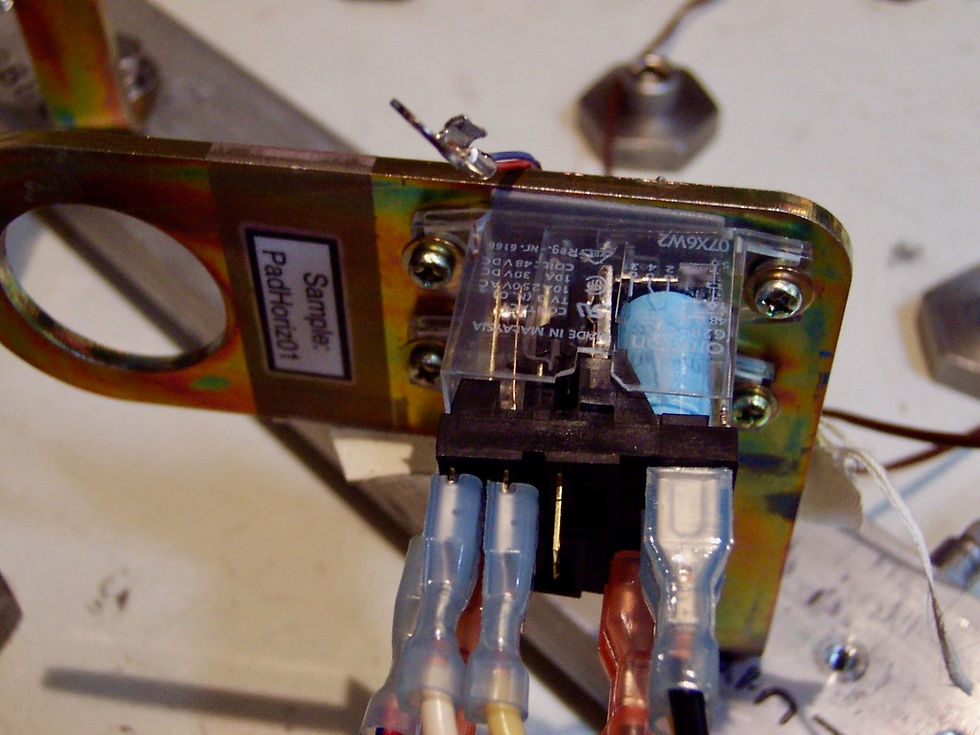How Stress Testing Improves Product Reliability
- Aug 25, 2025
- 4 min read
In industries such as automotive, consumer electronics, military, aerospace, and test laboratories, product reliability is paramount. Stress testing plays a crucial role in ensuring that products can withstand real-world conditions and perform consistently over time. This blog post explores how stress testing enhances product reliability, providing practical insights and examples for engineers and technicians.
Understanding Stress Testing and Its Importance
Stress testing is a method used to evaluate a product's durability and performance under extreme conditions. It involves subjecting the product to stresses beyond normal operational limits to identify potential weaknesses or failure points. This process helps manufacturers improve design, materials, and manufacturing processes to increase reliability.
For example, in the automotive industry, stress testing might involve exposing electronic control units to temperature extremes, vibration, and humidity to simulate harsh driving environments. This ensures that the components will function reliably in various climates and road conditions.
Stress testing benefits include:
Early detection of design flaws
Reduction of warranty costs
Improved customer satisfaction
Enhanced safety and compliance with industry standards
By simulating real-world stresses, engineers can predict how products will behave over their lifecycle and make necessary improvements before mass production.

Types of Stress Testing and Their Applications
There are several types of stress testing, each targeting different aspects of product reliability. Common methods include thermal cycling, vibration testing, mechanical shock, humidity exposure, and electrical overstress.
Thermal Cycling
Thermal cycling involves repeatedly heating and cooling a product to test its resistance to temperature changes. This is critical for aerospace components that experience rapid temperature fluctuations during flight.
Vibration Testing
Vibration testing simulates the mechanical stresses products face during transportation or operation. For instance, consumer electronics are tested for vibration resistance to ensure they survive shipping and everyday use.
Mechanical Shock
Mechanical shock testing subjects products to sudden impacts or drops. Military equipment often undergoes this testing to guarantee durability in combat conditions.
Humidity Exposure
Humidity testing evaluates how moisture affects product performance, especially important for outdoor electronics and automotive sensors.
Electrical Overstress
Electrical overstress testing checks how products handle voltage spikes or current surges, which is vital for power supplies and electronic circuits.
Each type of stress test targets specific failure modes, helping engineers design more robust products.

What is the difference between HASS and HALT?
Two advanced stress testing techniques often discussed in reliability engineering are Highly Accelerated Stress Screening (HASS) and Highly Accelerated Life Testing (HALT). While they share similarities, their purposes and applications differ.
Highly Accelerated Life Testing (HALT)
HALT is a development tool used early in the product design phase. It applies increasing levels of stress to identify the product's operational and destruct limits. The goal is to uncover design weaknesses and improve product robustness before production.
Highly Accelerated Stress Screening (HASS)
HASS is a production screening process that applies stresses just below the product's operational limits identified during HALT. It aims to detect manufacturing defects and ensure only reliable units reach customers. You can learn more about highly accelerated stress screening and its role in quality assurance.
Key Differences
| Aspect | HALT | HASS |
|----------------------|----------------------------------|----------------------------------|
| Purpose | Design improvement | Production screening |
| Timing | Early development | Post-production |
| Stress Levels | Increasing to failure | Below failure threshold |
| Outcome | Identify design weaknesses | Detect manufacturing defects |
Understanding these differences helps reliability engineers apply the right method at the right stage to maximize product reliability.

Practical Recommendations for Implementing Stress Testing
To maximize the benefits of stress testing, consider the following actionable recommendations:
Define Clear Objectives
Establish what you want to achieve with stress testing. Are you identifying design weaknesses, screening production units, or validating compliance?
Select Appropriate Stress Types
Choose stress tests relevant to your product’s operating environment. For example, aerospace components require rigorous thermal and vibration testing.
Use Realistic Stress Profiles
Simulate real-world conditions as closely as possible. Avoid arbitrary stress levels that do not reflect actual use cases.
Integrate Testing Early
Incorporate stress testing during the design phase to catch issues early and reduce costly redesigns.
Document and Analyze Results
Keep detailed records of test conditions and outcomes. Use data analytics to identify patterns and root causes of failures.
Train Personnel
Ensure technicians and engineers understand testing procedures and equipment to maintain consistency and accuracy.
Leverage Advanced Techniques
Utilize methods like HALT and HASS to accelerate reliability improvements and production quality control.
By following these steps, organizations can enhance product reliability, reduce failures, and improve customer trust.
The Future of Stress Testing in Reliability Engineering
As technology advances, stress testing methods continue to evolve. Emerging trends include:
Automation and AI Integration
Automated test systems combined with AI analytics enable faster, more accurate identification of failure modes.
Digital Twins
Virtual models of products simulate stress conditions, reducing the need for physical prototypes and accelerating development.
Sustainability Focus
Stress testing now also considers environmental impact, ensuring products are durable and eco-friendly.
Cross-Industry Collaboration
Sharing best practices across automotive, aerospace, and electronics sectors drives innovation in stress testing techniques.
Reliability engineers and technicians must stay informed about these developments to maintain competitive advantage and deliver superior products.
Stress testing is a vital tool for improving product reliability across diverse industries. By understanding its principles, applying appropriate methods, and embracing new technologies, engineers can ensure products meet the highest standards of durability and performance.




